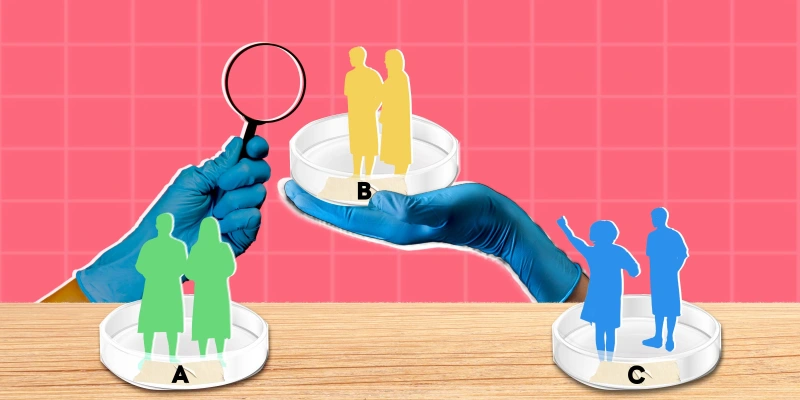KRAS has previously been termed “undruggable” due the belief that RAS lacked vulnerable binding areas (1, 2). To target KRAS, the newest inhibitors take advantage of a discovered inherent weakness within the mutant KRASG12C protein, namely, the cysteine at codon 12 creates an expandable pocket proximal to the Switch II region. This allows for small molecule binding which retains the mutant KRAS in an inactive state while not binding WT-RAS (3-6). We have seen many entrants into the KRAS space, with Amgen and Mirati being the most prominent. Amgen’s small molecule KRASG12C inhibitor, sotorasib (AMG510), first demonstrated activity in a phase 1 trial (7). Data presented at WCLC in 2019 showed a remarkable disease control rate, with 54% of evaluable NSCLC patients experiencing partial response and the remaining achieving stable disease (8). Based on the presented data, the FDA granted sotorasib fast tract designation for previously treated metastatic KRAS mutant NSCLC.
A phase 1 trial of sotorasib reported in late 2020 showed an 88.1% disease control rate in NSCLC (9). Subsequently, in May 2021, FDA granted accelerated approval to sotorasib in NSCLC based on the CodeBreaK100 trial, showing a PFS of 6.8 months and OS of 12.5 months, thereby cementing sotorasib’s position as the first FDA approved KRAS inhibitor (10). Mirati’s KRASG12C inhibitor, adagrasib (MRTX849), has shared similar successes. A remarkable disease control rate of 96% disease control rate (23 of 51 patients had PR, 26 had SD) was presented earlier this year (11). The phase 1/2 KRYSTAL-1 trial results were convincing enough for the drug to receive FDA breakthrough designation.
Co-alterations with KRAS predict worse outcomes and treatment resistance (12, 13). (MA14.03) In support of these findings, a biomarker analysis from the phase 2 CodeBreaK 100 trial found KEAP1 mutations to be more common in patients with early progression (PFS<3 months). This highlights the value of molecular profiling in these patients as it relates to prognostication and identification of targets.
Identifying appropriate patients for targeted therapy depends on adequate biomarker testing, and delays or inadequate comprehensive genomic testing can lead to sub-optimal management of these patients. (P24.01) The INSIGHT study demonstrated the utility of rapid blood based KRAS testing which can be done in <30 hours. (P59.14) Furthermore, ddPCR as compared to NGS was shown to be reliable for the detection of KRASG12C, with a NPV of 96%. If we iron out methods to effectively and efficiently identify relevant KRAS mutations, we can ensure that patients are truly treated with personalized therapy.
Now that experience with KRASG12C inhibitors is increasing, natural questions arise. Failure within the CNS has long been a critical determinant of a patient’s prognosis. (P52.03) To this end, results of the brain metastasis cohort of the phase 1/2 CodeBreaK 100 trial was presented at WCLC last week. Encouragingly, of 16 evaluable patients, 14 achieved intracranial disease control. Notably, when comparing the brain metastasis group to the non-brain metastasis group, a difference in disease control rate of 77.5% vs 84.1% respectively was noted. These results point to the fact that patients with brain metastases represent more aggressive disease but that sotorasib still can improve outcomes.
The next steps in targeting KRAS lie in combination approaches. Some of these approaches can be classified as inhibition of upstream mediators, downstream mediators, cell cycle inhibitors, and/or immune mediators.
Coinhibition of upstream mediators is being evaluated in CodeBreaK 101 with sotorasib with RTK inhibitors and SHP2 inhibitors. Similarly, KRYSTAL-1 and KRYSTAL-10 are evaluating adagrasib with EGFR inhibitors. The basis of this stems from data suggesting that SHP2 expression is essential for the growth of KRAS mutant NSCLC (14, 15). The KRYSTAL-2 trial is studying the combination of MRTX849 (adagrasib) with TNO155, an oral SHP2 inhibitor, hypothesizing that SHP2 inhibition can decrease increased ERK driven tumorigenesis (16).
Inhibition of downstream mediators, such as MEK, is an attractive approach. CodeBreaK 101 is evaluating sotorasib with trametinib (MEK1/2 inhibitor), as well as everolimus (mTORC1 inhibitor). (P52.05) Combination of VS-6766 (a dual RAF/MEK inhibitor) preclinically demonstrated synergy with sotorasib and adagrasib. Furthermore, VS-6766, sotorasib, and FAK inhibition resulted in tumor regression. KRASG12V cell lines were also seen to have synergy with VS-6766 and defactinib (FAK inhibitor). This builds upon a prior study of VS-6766 with defactinib presented at AACR this year, which showed promise in KRASG12V patients, giving hope for this unmet need.
A third approach is to combine KRAS inhibition with cell cycle inhibition. In preclinical studies, CDK4/6 inhibitors act synergistically with KRASG12C inhibitors, thereby supporting the combination of sotorasib with palbociclib in CodeBreaK 101.
Lastly, combination with immunotherapy is a popular approach. Immunotherapy is standard for KRAS mutant NSCLC, and thus combinations are being studied in the CodeBreaK and KRYSTAL trials, among others. (P52.02) Additionally, SHP2 expression was predictive of response to immunotherapy - of 61 advanced KRAS mutant NSCLC patients, 32 had SHP2 expression (high expression in 78%). High SHP2 expression levels was associated with longer PFS and OS. Furthermore, co-expression of SHP2 and PD-L1 had longer PFS and OS compared to other combinations of SHP2 and PD-L1 expression levels. This finding supports biomarker selection for combination therapy.
While the science supports the utility of KRAS inhibitors, patient preference must also be considered. (P52.01) In qualitative interviews of 24 patients with KRASG12C mutant NSCLC, most patients (88.2%) preferred oral treatments to intravenous chemotherapy. As expected, patient preference can be a driver of prescribing habits and subsequently drive innovation in oral targeted therapies.
Overall, despite the decade’s long challenges associated with KRAS inhibition, there finally seem to be treatment options available for patients with KRAS mutations. Single-agent sotorasib and adagrasib have shown their promise; now the attention is turning to what is next. Despite the advances we have described, there are still many potential approaches, all with strong preclinical rationale, such as the use of cancer vaccines, cellular therapies, iExosomes, and modulation of the tumor microenvironment (via CXCR inhibition) as just some examples. Nevertheless, with these advances, we expect the field of KRAS mutant NSCLC to become filled with even more hope than before.
Dr. Velcheti has received consulting fees and/or honorarium from Amgen, Novartis, Merck, Astrazenca, BMS, Foundation Medicine, EMD Serono, and Bayer. Dr. Punekar has no conflicts of interest to report.
References
1. Westcott PM, To MD. The genetics and biology of KRAS in lung cancer. Chin J Cancer. 2013;32(2):63-70.
2. Cox AD, Fesik SW, Kimmelman AC, Luo J, Der CJ. Drugging the undruggable RAS: Mission possible? Nat Rev Drug Discov. 2014;13(11):828-51.
3. Lito P, Solomon M, Li LS, Hansen R, Rosen N. Allele-specific inhibitors inactivate mutant KRAS G12C by a trapping mechanism. Science. 2016;351(6273):604-8.
4. O'Bryan JP. Pharmacological targeting of RAS: Recent success with direct inhibitors. Pharmacol Res. 2019;139:503-11.
5. Ostrem JM, Peters U, Sos ML, Wells JA, Shokat KM. K-Ras(G12C) inhibitors allosterically control GTP affinity and effector interactions. Nature. 2013;503(7477):548-51.
6. Lim SM, Westover KD, Ficarro SB, Harrison RA, Choi HG, Pacold ME, et al. Therapeutic targeting of oncogenic K-Ras by a covalent catalytic site inhibitor. Angew Chem Int Ed Engl. 2014;53(1):199-204.
7. Fakih M, O'Neil B, Price TJ, Falchook GS, Desai J, Kuo J, et al. Phase 1 study evaluating the safety, tolerability, pharmacokinetics (PK), and efficacy of AMG 510, a novel small molecule KRASG12C inhibitor, in advanced solid tumors. Journal of Clinical Oncology. 2019;37(15_suppl):3003-.
8. Govindan RF, MG. Price, TJ. Falchook, GS. Desai, J. Kuo, JC. Phase 1 Study of AMG 510, a Novel Molecule Targeting KRAS G12C Mutant Solid Tumors. Annals of Oncology. 2019;30:v159-93.
9. Hong DS, Fakih MG, Strickler JH, Desai J, Durm GA, Shapiro GI, et al. KRASG12C Inhibition with Sotorasib in Advanced Solid Tumors. New England Journal of Medicine. 2020;383(13):1207-17.
10. Skoulidis F, Li BT, Dy GK, Price TJ, Falchook GS, Wolf J, et al. Sotorasib for Lung Cancers with KRAS p.G12C Mutation. New England Journal of Medicine. 2021;384(25):2371-81.
11. Riely GJ, Ou SHI, Rybkin I, Spira A, Papadopoulos K, Sabari JK, et al. 99O_PR KRYSTAL-1: Activity and preliminary pharmacodynamic (PD) analysis of adagrasib (MRTX849) in patients (Pts) with advanced non–small cell lung cancer (NSCLC) harboring KRASG12C mutation. Journal of Thoracic Oncology. 2021;16(4):S751-S2.
12. Romero R, Sayin VI, Davidson SM, Bauer MR, Singh SX, LeBoeuf SE, et al. Keap1 loss promotes Kras-driven lung cancer and results in dependence on glutaminolysis. Nature medicine. 2017;23(11):1362-8.
13. Krall EB, Wang B, Munoz DM, Ilic N, Raghavan S, Niederst MJ, et al. KEAP1 loss modulates sensitivity to kinase targeted therapy in lung cancer. Elife. 2017;6.
14. Mainardi S, Mulero-Sanchez A, Prahallad A, Germano G, Bosma A, Krimpenfort P, et al. SHP2 is required for growth of KRAS-mutant non-small-cell lung cancer in vivo. Nat Med. 2018;24(7):961-7.
15. Ruess DA, Heynen GJ, Ciecielski KJ, Ai J, Berninger A, Kabacaoglu D, et al. Mutant KRAS-driven cancers depend on PTPN11/SHP2 phosphatase. Nat Med. 2018;24(7):954-60.
16. Sabari JK, Park H, Tolcher AW, Ou S-HI, Garon EB, George B, et al. KRYSTAL-2: A phase I/II trial of adagrasib (MRTX849) in combination with TNO155 in patients with advanced solid tumors with KRAS G12C mutation. Journal of Clinical Oncology. 2021;39(3_suppl):TPS146-TPS.






